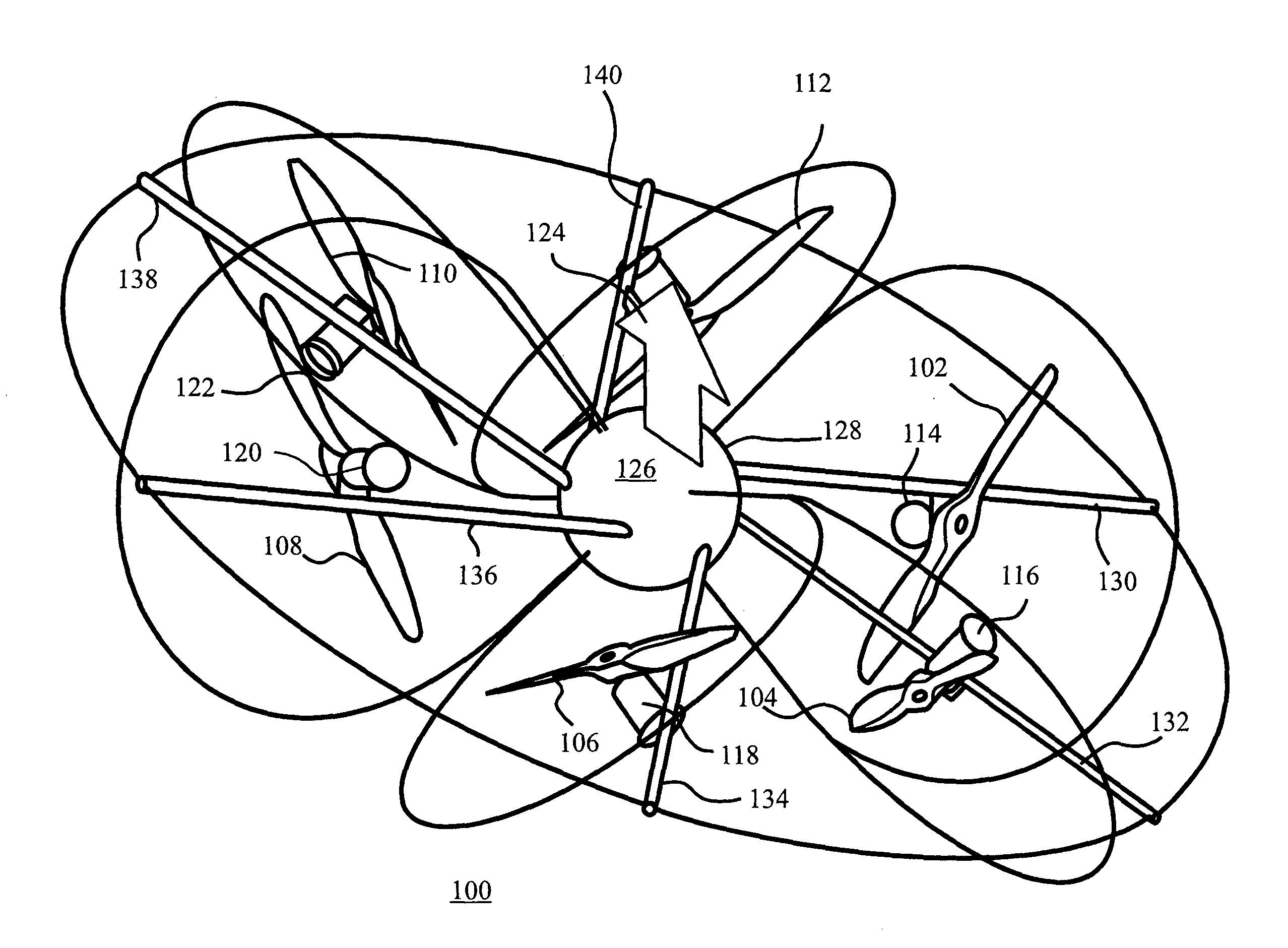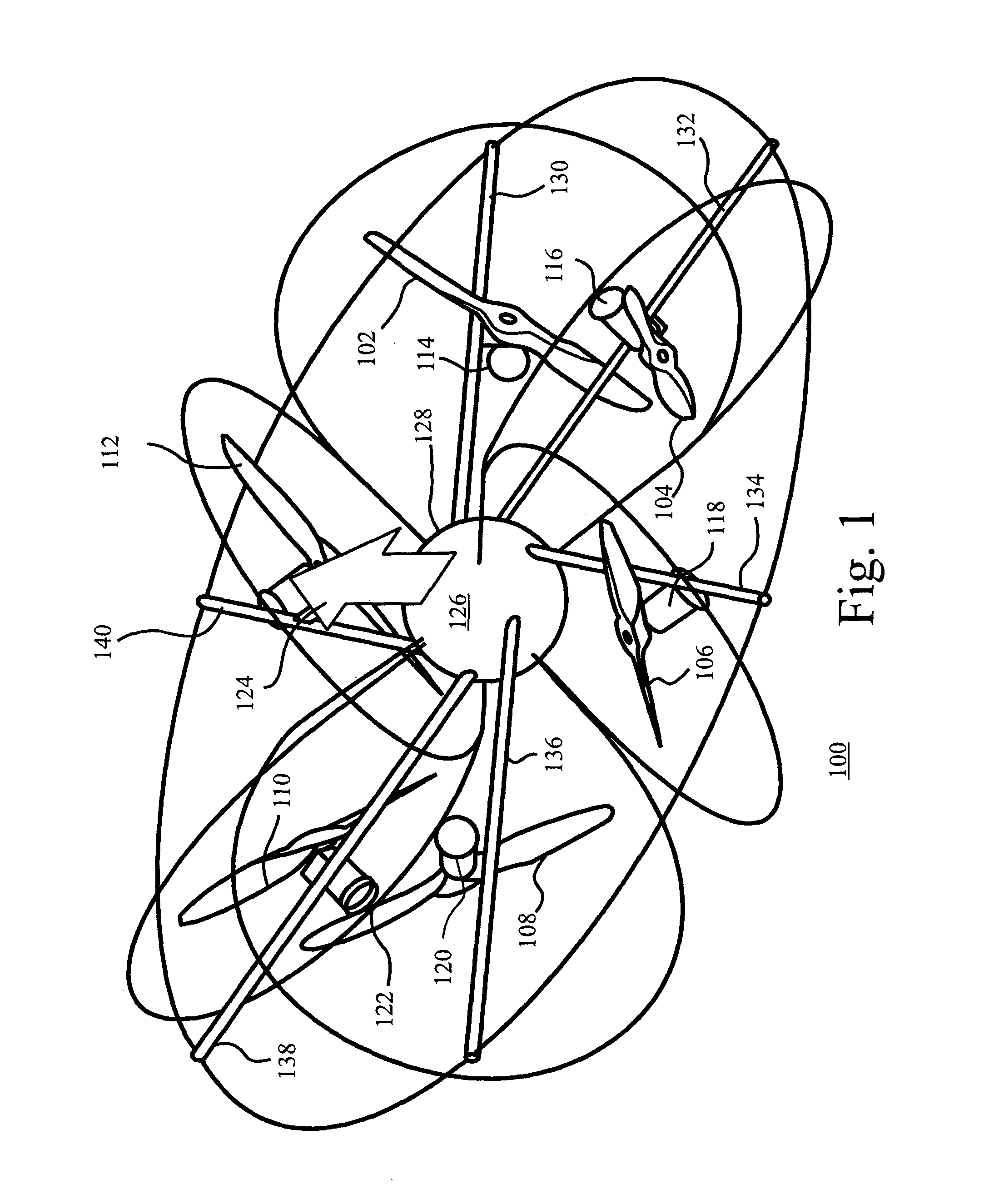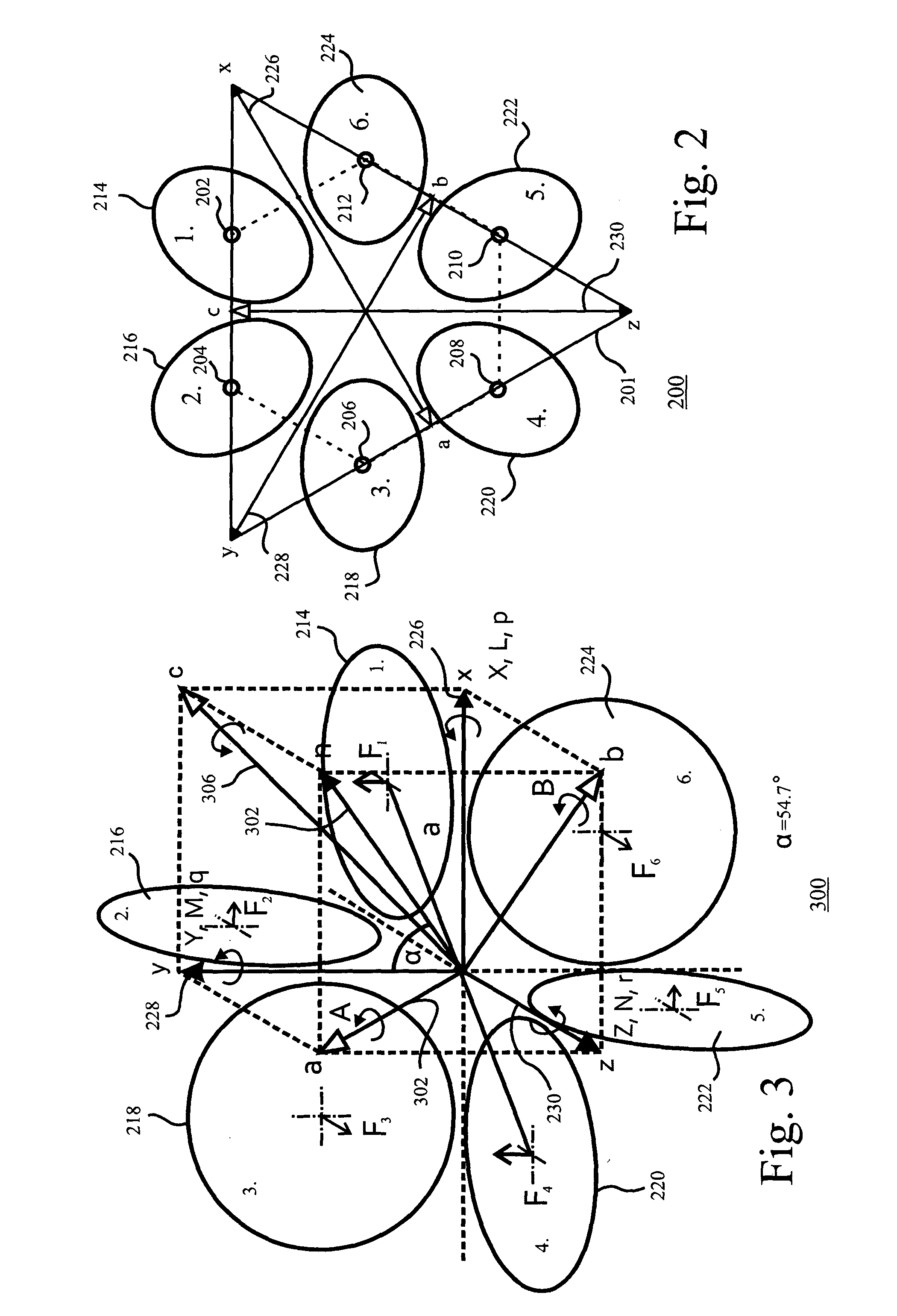Rotary wing vehicle
a rotary wing and vehicle technology, applied in the field of vehicles, can solve the problems that the full or partial authority thrust vectoring cannot usually be achieved without significant engineering cost, and achieve the effect of reducing thrust and simplifying and fastening the translation control respons
- Summary
- Abstract
- Description
- Claims
- Application Information
AI Technical Summary
Benefits of technology
Problems solved by technology
Method used
Image
Examples
Embodiment Construction
[0049]FIG. 1 shows a rotary wing vehicle 100 according to an embodiment of the invention. The vehicle comprises six rotors 102 to 112. The six rotors 102 to 112 are arranged in pairs in three inclined planes (not shown), referred to as disc planes. For the example shown here, the disc planes are orthogonal to each other, however note that the angle between disc planes may be chosen arbitrarily. The rotors 102 to 112 are driven by respective motors 114 to 124. The rotor-motor combinations have a fixed orientation relative to the body 126, or body axes, of the vehicle 100. Therefore, each rotor 102 to 112 provides a respective thrust vector having a fixed orientation relative to a plane (not shown) of the vehicle that comprises the centres of rotation of the rotors 102 to 112. The plane is known as the Vehicle Reference Plane (VRP), which is shown in FIG. 7. The vehicle body 126 comprises a central hub 128 bearing a number of spokes or struts 130 to 140. The rotor-motor arrangements a...
PUM
 Login to View More
Login to View More Abstract
Description
Claims
Application Information
 Login to View More
Login to View More - R&D
- Intellectual Property
- Life Sciences
- Materials
- Tech Scout
- Unparalleled Data Quality
- Higher Quality Content
- 60% Fewer Hallucinations
Browse by: Latest US Patents, China's latest patents, Technical Efficacy Thesaurus, Application Domain, Technology Topic, Popular Technical Reports.
© 2025 PatSnap. All rights reserved.Legal|Privacy policy|Modern Slavery Act Transparency Statement|Sitemap|About US| Contact US: help@patsnap.com



